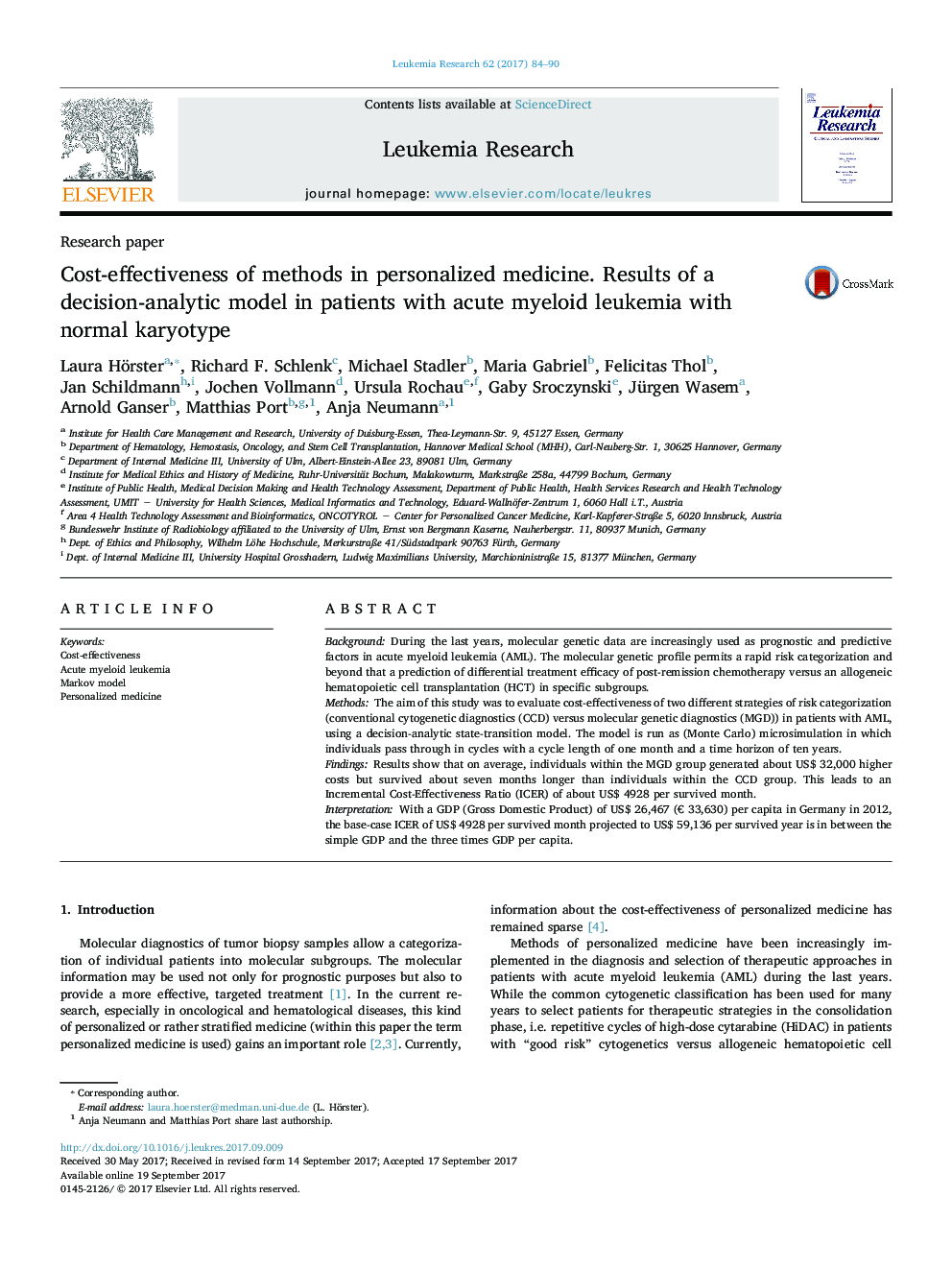| Article ID | Journal | Published Year | Pages | File Type |
|---|---|---|---|---|
| 5527703 | Leukemia Research | 2017 | 7 Pages |
â¢Molecular genetic data as prognostic/predictive factors in acute myeloid leukemia.â¢Seven months longer life at US$ 32,000 more costs (molecular diagnostic strategy).â¢Incremental cost-effectiveness ratio of about US$ 4928 per survived month.â¢Costs of allogeneic transplantation are defined as cost driver.â¢Method of personalized medicine can be interpreted as cost-effective (WHO approach).
BackgroundDuring the last years, molecular genetic data are increasingly used as prognostic and predictive factors in acute myeloid leukemia (AML). The molecular genetic profile permits a rapid risk categorization and beyond that a prediction of differential treatment efficacy of post-remission chemotherapy versus an allogeneic hematopoietic cell transplantation (HCT) in specific subgroups.MethodsThe aim of this study was to evaluate cost-effectiveness of two different strategies of risk categorization (conventional cytogenetic diagnostics (CCD) versus molecular genetic diagnostics (MGD)) in patients with AML, using a decision-analytic state-transition model. The model is run as (Monte Carlo) microsimulation in which individuals pass through in cycles with a cycle length of one month and a time horizon of ten years.FindingsResults show that on average, individuals within the MGD group generated about US$ 32,000 higher costs but survived about seven months longer than individuals within the CCD group. This leads to an Incremental Cost-Effectiveness Ratio (ICER) of about US$ 4928 per survived month.InterpretationWith a GDP (Gross Domestic Product) of US$ 26,467 (⬠33,630) per capita in Germany in 2012, the base-case ICER of US$ 4928 per survived month projected to US$ 59,136 per survived year is in between the simple GDP and the three times GDP per capita.
